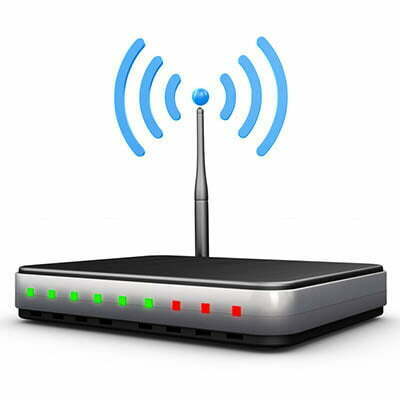Wi-Fi has been one of the single most useful innovations for the modern office. Connecting to your Internet without having to be physically connected to it via an ethernet wire has been an incredibly freeing process–one that opens up all sorts of possibilities of where (and how) you can get work done. How can you make sure that your Wi-Fi signals are as clear and reliable as possible?
The unfortunate part of Wi-Fi is that it’s so commonplace, people expect it to always be available, 100 percent of the time. Even the slightest interruption is enough to throw some folks into a frenzy. Perhaps you’ve experienced something like this yourself when your Internet at home is down in the middle of your favorite television show. In the workplace, a loss of Wi-Fi can contribute to far bigger problems than catching up on your soaps. Instead, it can mean a loss of productivity–a form of downtime that can cost your organization significantly.
There are countless benefits to keeping your Wi-Fi network both accessible and fast for your employees. In fact, 42 percent of employees have found that it’s a major contributing factor toward greater productivity in the workplace. This reason alone is enough to consider just how fast and reliable your own Wi-Fi connection is, as well as taking steps toward making it even better than before. Here are some ways that your organization can improve the quality of your Wi-Fi connection.
- Test your speed: Before you can improve your speed, it’s crucial that you test it to see if it really needs improving. To do this, you can work with your ISP or run one of the assorted speed tests that you can find on the Internet.
- Find the peaks and valleys: Once you know the Wi-Fi speed that you can expect, you can use this information to find out where your organization’s connection is strongest and weakest. A heatmapping application on your smartphone makes this process easier as well.
- Reconfiguring your router: Your router could also be the cause of your wireless troubles. You can access your router’s dashboard through your computer’s web browser, allowing you to reconfigure it as needed. Of course, before you make any crazy changes to it, you should first discuss the changes with your IT provider.
- Replacing your router: If your router is simply too old to be effective for your business’ needs, you can replace it. Remember that your technology should evolve and adapt as your organization does. If your router is older, it doesn’t necessarily have the most up-to-date wireless standards in place.
- Check for firmware updates: If your router has outdated firmware installed, then it has plenty of untapped potential that you might not immediately notice. To access this potential, visit the manufacturer’s website and download the latest firmware. Again, it’s critical that you consult IT before doing this.
- Move your router: Use your heatmapping tool to find the best place for your router. Doing so can help you improve signal strength throughout your space.
To learn more about how your business can improve Wi-Fi strength and signal, reach out to us at 561-582-9467.





